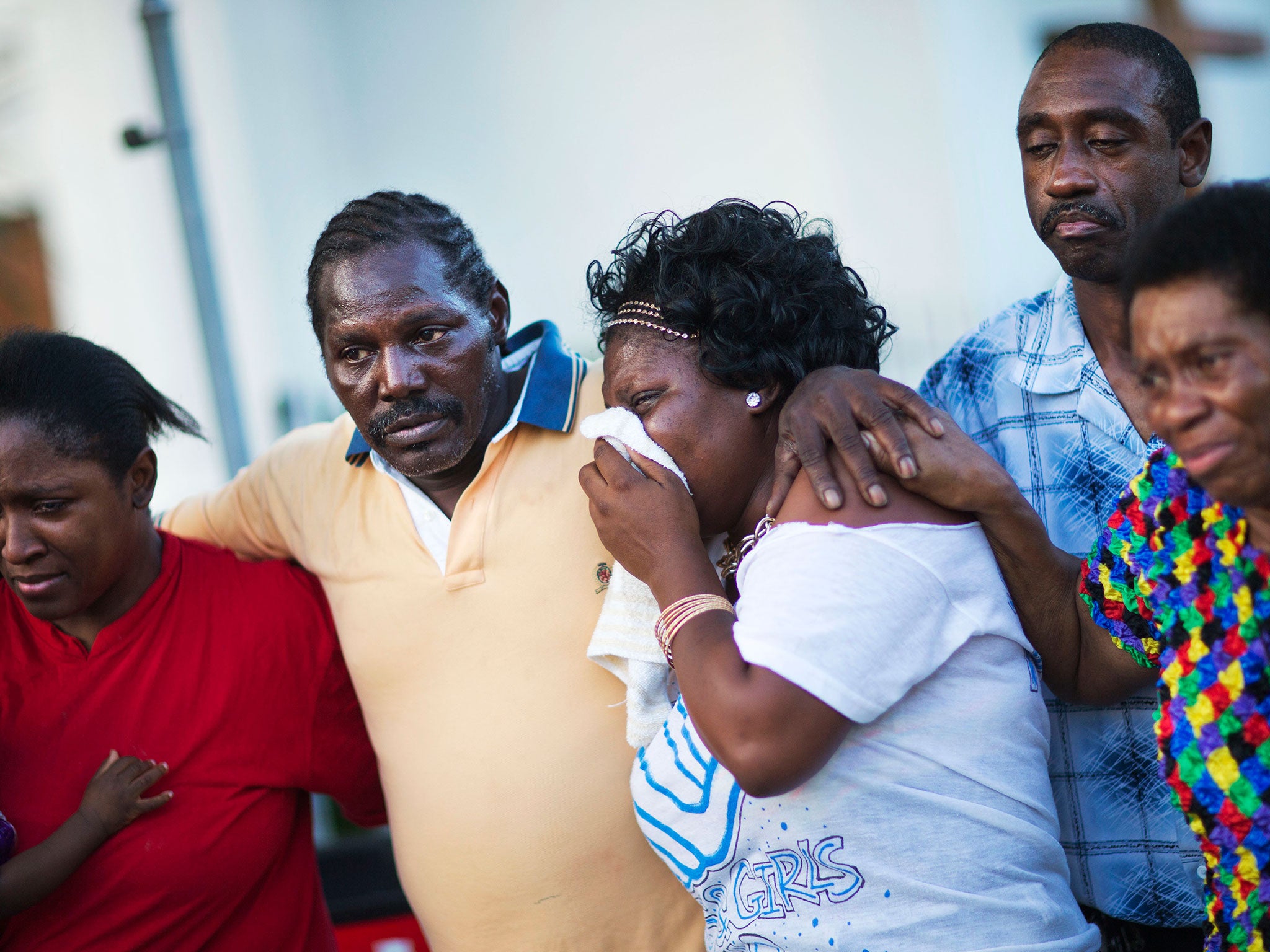Charleston shooting: Black and Muslim killers are 'terrorists' and 'thugs'. Why are white shooters called 'mentally ill'?
This is not an act of just 'one hateful person.' It is a manifestation of the racial hatred and white supremacy that continues to pervade our society

Police are investigating the shooting of nine African Americans at Emanuel AME Church in Charleston as a hate crime committed by a white man. Unfortunately, it’s not a unique event in American history. Black churches have long been a target of white supremacists who burned and bombed them in an effort to terrorise the black communities that those churches anchored. One of the most egregious terrorist acts in US history was committed against a black church in Birmingham, Alabama, in 1963. Four girls were killed when members of the KKK bombed the 16th Street Baptist Church, a tragedy that ignited the Civil Rights Movement.
But listen to major media outlets and you won’t hear the word “terrorism” used in coverage of this latest shooting. You won’t hear the white male shooter, identified as 21-year-old Dylann Roof, described as “a possible terrorist.” And if coverage of recent shootings by white suspects is any indication, he never will be. Instead, the go-to explanation for his actions will be mental illness. He will be humanized and called sick, a victim of mistreatment or inadequate mental health resources. Activist Deray McKesson noted this morning that, while discussing Roof’s motivations, an MSNBC anchor said “we don’t know his mental condition.” That is the power of whiteness in America.
US media practice a different policy when covering crimes involving African Americans and Muslims. As suspects, they are quickly characterized as terrorists and thugs, motivated by evil intent instead of external injustices. While white suspects are lone wolfs — Mayor Joseph Riley of Charleston already emphasized this shooting was an act of just “one hateful person” — violence by black and Muslim people is systemic, demanding response and action from all who share their race or religion. Even black victims are vilified. Their lives are combed for any infraction or hint of justification for the murders or attacks that befall them: Trayvon Martin was wearing a hoodie. Michael Brown stole cigars. Eric Garner sold loosie cigarettes. When a black teenager who committed no crime was tackled and held down by a police officer at a pool party in McKinney, Texas, Fox News host Megyn Kelly described her as “No saint either.”
Early news reports on the Charleston church shooting followed a similar pattern. Cable news coverage of State Senator and Reverend Clementa Pinckney, pastor of Emanuel AME who we now know is among the victims, characterised his advocacy work as something that could ruffle feathers. The habit of characterizing black victims as somehow complicit in their own murders continues.

It will be difficult to hold to this corrosive, racist media narrative when reporting on the shooting at Emanuel AME Church. All those who were killed were simply participating in a Wednesday night Bible study. And the shooter’s choice of Emanuel AME was most likely deliberate, given its storied history. It was the first African Methodist Episcopal church in the South, founded in 1818 by a group of men including Morris Brown, a prominent pastor, and Denmark Vesey, the leader of a large, yet failed, slave revolt in Charleston. The church itself was targeted early on by fearful whites because it was built with funds from anti-slavery societies in the North. In 1822, church members were investigated for involvement in planning Vesey’s slave revolt, and the church was burned to the ground in retribution.
With that context, it’s clear that killing the pastor and members of this church was a deliberate act of hate. Mayor Riley noted that “The only reason that someone could walk into a church and shoot people praying is out of hate.” But we need to take it a step further. There was a message of intimidation behind this shooting, an act that mirrors a history of terrorism against black institutions involved in promoting civil and human rights. The hesitation on the part of some of the media to label the white male killer a terrorist is telling.
In the rapidly forming news narrative, the fact that black churches and mosques historically have been the targets of racial violence in America should not be overlooked. While the 1963 Birmingham church is the most historic, there also was a series of church burnings during the 1990s. Recognition of the terror those and similar acts impose on communities seems to have been forgotten post-September 11. The subsequent Islamophobia that has gripped sectors of media and politics suggests that “terrorism” only applies in cases where the suspects are darker skinned.
This time, I hope that reporters and newscasters will ask the questions that get to the root of acts of racially motivated violence in America. Where did this man, who killed parishioners in their church during Bible study, learn to hate black people so much? Did he have an allegiance to the Confederate flag that continues to fly over the state house of South Carolina? Was he influenced by right-wing media’s endless portrayals of black Americans as lazy and violent?
I hope the media coverage won’t fall back on the typical narrative ascribed to white male shooters: a lone, disturbed or mentally ill young man failed by society. This is not an act of just “one hateful person.” It is a manifestation of the racial hatred and white supremacy that continues to pervade our society, 50 years after the Birmingham church bombing galvanized the Civil Rights Movement. It should be covered as such. And now that authorities have found their suspect, we should be calling him what he is: a terrorist.
Copyright: Washington Post
Join our commenting forum
Join thought-provoking conversations, follow other Independent readers and see their replies
Comments
Bookmark popover
Removed from bookmarks